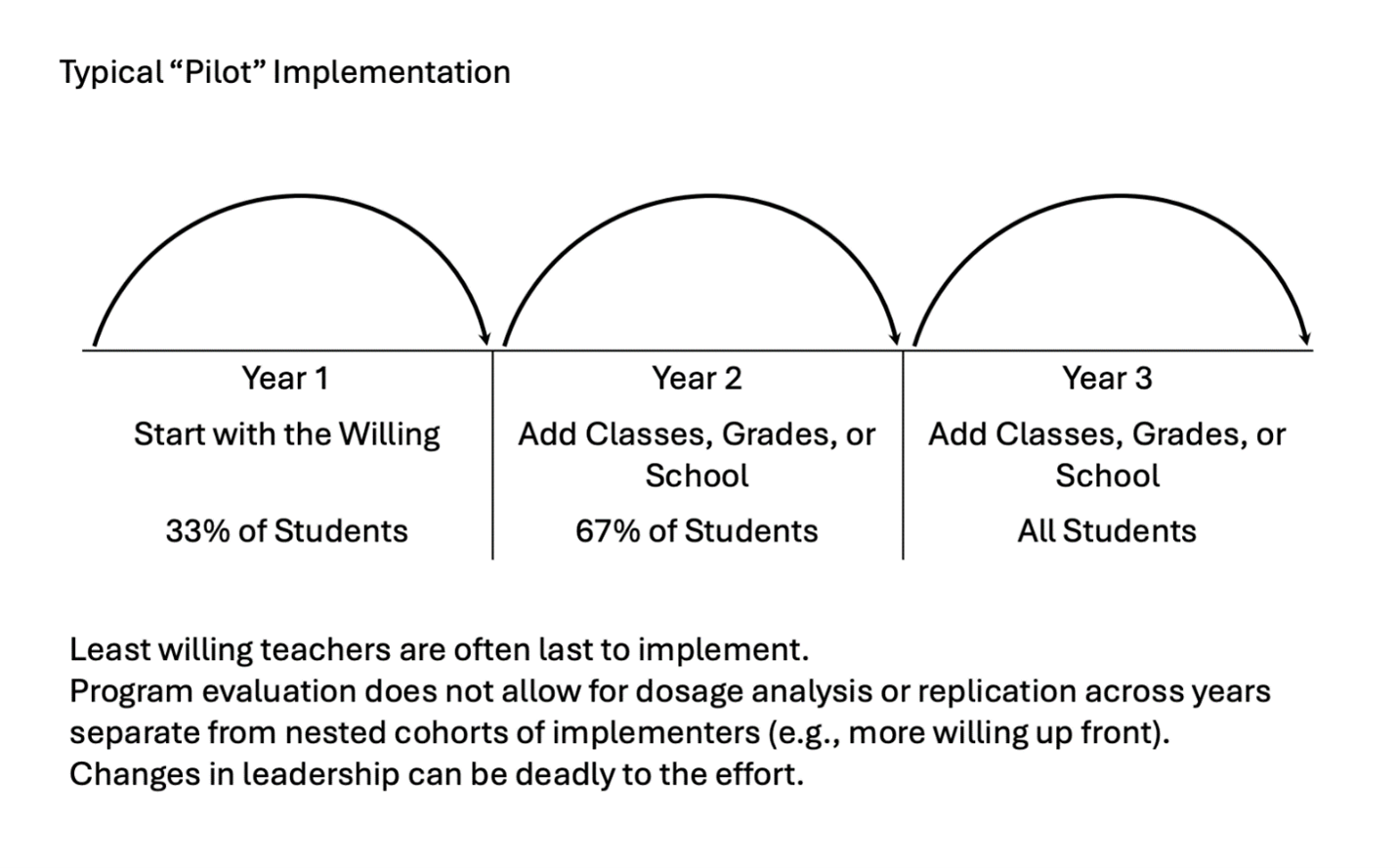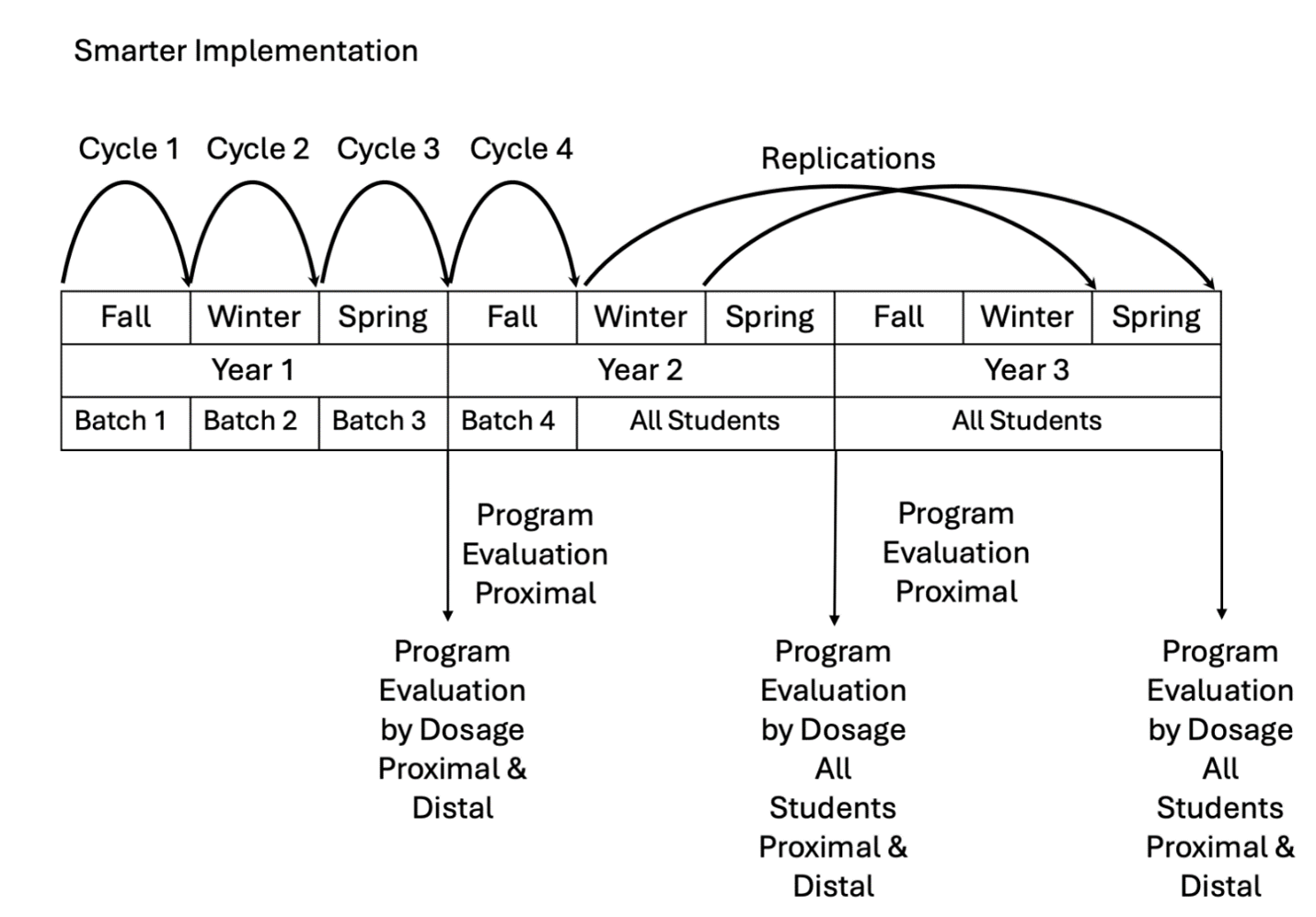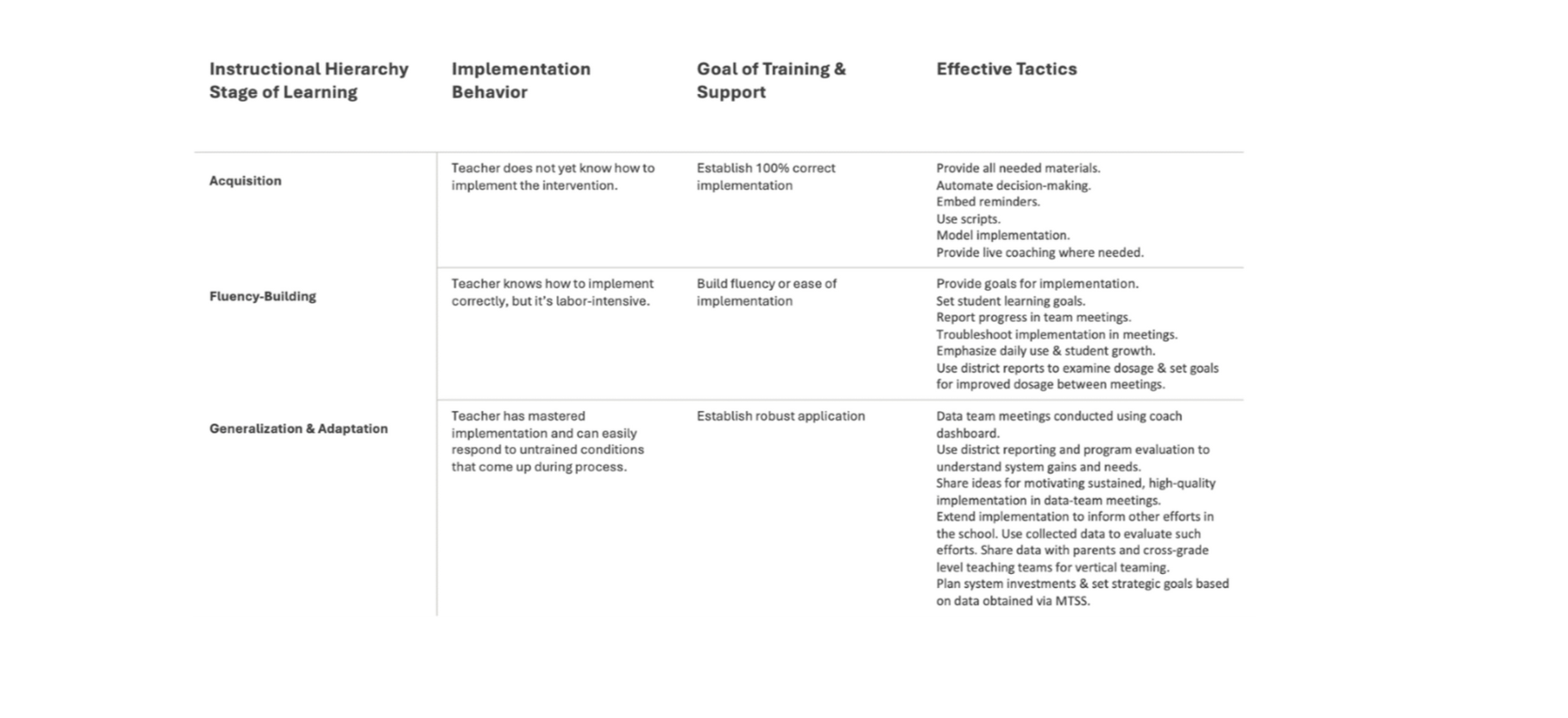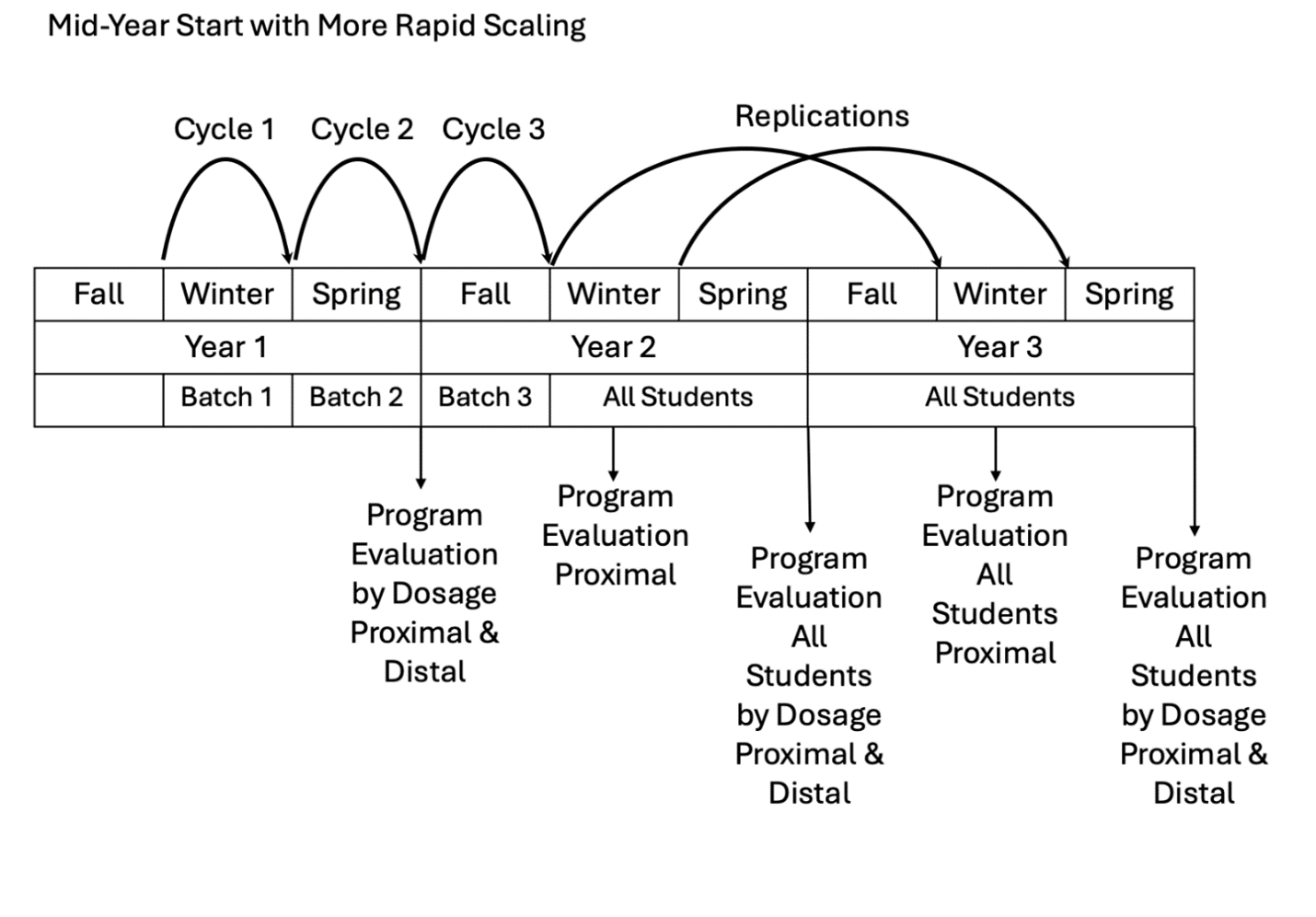Ditch the pilots: A case for faster and smarter implementation of MTSS
By Dr. Amanda VanDerHeyden, SpringMath author
A mid-year implementation is one of my favorite ways to begin MTSS. I can understand the allure of a beginning of year start for most school-level initiatives, however, a mid-year implementation has a lot of benefits that are often overlooked by leaders. A major benefit of mid-year implementation is that it helps systems avoid the pernicious problem of scaling too slowly. If you have tuned in to our virtual training sessions online or read chapter 7 of our book "Supporting Math MTSS through SpringMath," then you know that we feel that many systems do not pilot well, despite their good intentions. We suggest smart scaling instead and this means more rapid implementation cycles in your effort until you reach school- and system-wide use.
The problem with piloting
In a typical pilot, the effort usually begins with those teachers who are willing to implement the “new” effort. Often, these willing implementers are those who are going to be the strongest natural implementers without a lot of support. They may already be familiar with the work and enthusiastic to use it or lead the effort in their schools. Their natural tendency to implement well is known to their colleagues and peers who will implement later and from perhaps a more critical or less enthusiastic position which creates two problems in scaling. First, the early results may be the best results and may not easily duplicate across future years. Second, the system does not learn enough about how to cultivate the infrastructure needed to sustain MTSS over time. For example, bringing new teachers on board in more rapid cycles allows for leaders to gain experience about the system barriers that can be minimized, the specific soft spots of implementation unique to your context, and to identify more rapidly the teachers who need more support for effective implementation.

Roadblocks are often not encountered until the second year and by the third year (when the final wave of participants are brought on board) the system has become somewhat disenchanted with the effort. Additionally, the amount of time that has passed allows for all kinds of intervening structural barriers to emerge. In research, these variables are called confounds. Simply by allowing so much time to pass, you allow for events like a change in principal leadership, the departure of a couple of veteran early adopter teachers, or the adoption of a new curriculum to cloud your program evaluation data and diffuse your effort.
A typical pilot, therefore, produces weaker data that does not allow for rapid troubleshooting as the implementation effort unfolds. Because the data become quickly murky, systems try to respond to less-than-ideal data in the summer months and make adjustments once per year with little follow-up. This approach is a near-perfect recipe for poor implementation.
Scaling more rapidly allows for more successful MTSS implementation
There are several distinct, valuable benefits of more rapid scaling of MTSS efforts in schools. First, you reach all students faster. Second, you discover your targets for implementation improvement faster. Implementation is a learned behavior like any behavior and therefore, is susceptible to the same antecedent and consequence supports that can be used to shape any other learned behavior. So just as we support students to master new math skills, we need to support teachers to master the instructional tactics we use in MTSS.

An obvious maxim of any behavioral shaping or learning effort is that we do not want to allow implementation errors to go undetected. When teachers are learning to implement an MTSS process, those teachers are in the acquisition stage of learning for new behaviors. Therefore, we want to model correct implementation, provide guided support for correct implementation, and immediately detect and repair any implementation errors. Data-team meetings are not as helpful for acquisition learning for a new implementation effort by teachers. To the greatest extent possible, acquisition support should include providing all materials needed to implement, providing support for any decision-making that needs to occur to get to intervention, providing a script that includes all of the steps needed to implement the procedure for the day with ideally some recorded or live modeling of correct implementation, and then follow-up with the teacher to enable performance feedback for the implementation. Because live coaching is an expensive resource, we suggest that systems track implementation in real time and provide in-class, live coaching support only where such support is needed. Importantly, supporting teachers to acquire the skill of correct implementation of any MTSS model is only possible with more rapid implementation cycles that enable more frequent observation of teacher behavior in tandem with effects on student learning in real time.

Once teachers can successfully implement the new effort (and we tend to over-estimate such new skill acquisition among our adult colleagues to the detriment of the implementation effort), then teachers are ready for the type of fluency building support for the process that is focused on helping them identify efficiencies in their implementation process that enable easier use of MTSS processes. Data-team meetings are a great format for supporting fluency-building among teachers for intervention implementation and data interpretation.
Once teachers can readily implement the MTSS procedures and are doing so consistently, leadership teams can also think about generalization behaviors which can include supporting teachers to build their own in-house professional development activities to support the effort, systems for sharing materials and ideas for enhanced implementation, team meetings to identify ways to expand the effort and use the effort to deploy upgrades in core instruction more generally, using what is being learned from the MTSS effort. In many schools, generalization efforts could include examining instructional calendars, tracking results of other supplemental tools, developing standard structures to improve communication with parents about math growth in the school, identifying students who might be considered for gifted services, building repositories to share materials across classrooms, superior vertical teaming and evaluating progress monitoring data toward more aspirational targets over time at the system level (e.g., improving enrollment and successful completion of AP courses in mathematics).
The table below summarizes how trainers can support teachers through acquisition, fluency-building, and generalization as they master implementation of MTSS.

The benefits of a mid-year start to implementation
A mid-year start delivers the benefits of more rapid scaling with better support of teacher implementation, but also presents some unique benefits. Specifically, the start of the school year is crowded with new routines and new initiatives while teachers are still getting to know their students. Additionally, there is a well-replicated finding of stronger academic gains on screening measures occurring in the fall versus the spring. The cause of weaker spring growth is unclear (we have no causal studies), the pattern itself is clear and thus efforts to maximize or attend to academic growth through the winter and spring would be a wise systemic investment.

A mid-year implementation of an academic MTSS effort usually can be accomplished with a cost reduction (most systems provide a price reduction for mid-year adoption). There is less competition for faculty planning and professional development in the winter, so leaders can plan for systemic professional learning to support the mid-year start. The fall provides an optimal opportunity for leaders and data teams to meet to prepare for the implementation by reacting to the prior year’s state testing data. Plus, a mid-year start allows for a fuller, more actionable program evaluation to guide effective implementation.
Here is a summary table of some of the benefits of a mid-year implementation to an MTSS effort.
Benefits of mid-year implementation
-
Effort does not get lost in the shuffle in start of the school year activities
-
Profits from the teacher having established solid classroom routines
-
Provides a solid working baseline for getting started and informing program evaluation with winter screening
-
Allows teams to build implementation skills as they go, discover unanticipated soft spots in your school system, and find the pockets of weak implementation.
-
Increases the probability of seeing results within two weeks of starting classwide intervention.
-
Highlights strong implementation effects by spring; weak areas can be targeted for improvement with summer adjustments (e.g., schedules, leadership, PD, data teaming), ensuring a smoother, more effective start the following fall
-
Sets the stage for a smooth start in fall, with a full year of data available by the following winter
Contact Jay Anderson for more information on expanding your SpringMath implementation.
